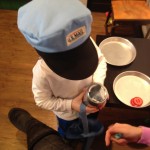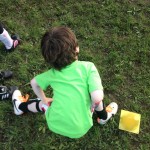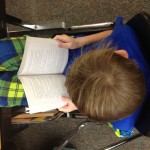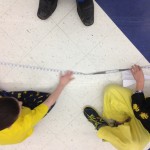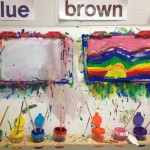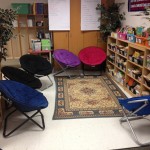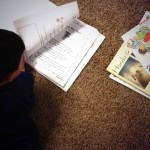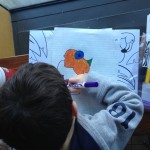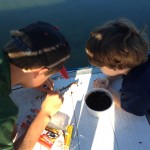This post loosely, and in very general terms, explores some prospective functional implications of various learning theories on daily education and educational leadership practice. It matches what educators (and others concerned with learning) think about doing with what we actually do, and is intended to illustrate a few ways in which what we do works in favor of positive growth and achievement for learners across a spectrum. In and among the following paragraphs I attempt to illustrate merit in various constructs while maintaining the assertion that no singular theory holds holistically true for any given learning scenario; instead, that educators and educational leaders are well served to consider compound perspectives and boundless possibilities as we work to enhance the experiences of all stakeholders in our school communities.
Behaviorists theorize that conditioning mechanisms such as positive and negative reinforcements, along with punishments, are primary catalysts to learning, and that the underpinning of subsequent habitual developments enhances and perpetuates learning pathways. Through Social Cognitive Learning Theory, the ideas of interaction, perceptions, attitudes, and environment add to the conditioning argument, while Constructivists suggest individualized, multifaceted, and unique developmental pathways, based on additional factors like readiness, experience, and aptitude. In the next sections I will briefly relate those concepts to my practice, reflect on where I’ve found continuity, and suggest connected ideas for continued application.
Varied Pathways to Learning & Growth
Learning theory offers multiple lenses through which educators and educational leaders can think about and develop systems and strategies for, and attitudes toward learning and growth. I would argue that to focus on one particular theory as a tell-all for effective practice diminishes the notion of personal development. While human beings are similar to one another in many ways, it is our individualized and unique characteristics that determine our individualized and unique learning patterns and pathways. Through my lens as an administrator, it stands to reason that we are each subject to a distinctive combination of traits and experiences, which allow us to each progress with inputs and outputs connected to those traits and experiences. We seem to be ever growing, ever changing, and in turn, our learning and communication needs seem to vacillate over time.
Data Collection & Feedback
Having served in multiple roles during my decade as an educational leader (both as a teacher and an administrator), I’ve found data collection to be an essential ingredient in positive progress toward student achievement. In fact, I would argue that along with subsequent feedback, it might be the essential ingredient. In a recent conversation with a colleague, immediate and connected feedback was identified as “the most important aspect of effective teaching practice.” Immediate is relatively easy, it’s the connected part that takes some elbow grease. That’s where the collection of data in its many forms comes in. Arguably, any professional whose intended outcome is the growth and development of those he serves (children and/or adults) should be consistently collecting data in both formal and informal ways, with the intention of translating that data into connected, relevant feedback.
Informal. When considering growth, even through a comparative rather than targeted theoretical lens, we need to have a starting point. Individuals might very well learn some things best by way of consistent and repetitive conditioning, and, it is certainly possible that the learning might be enhanced if those same individuals were given information and instruction to aid in a developmental process by which they could find meaning in whatever outcomes the aforementioned conditioning is meant to achieve. Furthermore, I have no basis for denying that connections to individual growth pathways, social paradigms, and established skill sets would further enhance, solidify, and integrate the learning for meaningful application and the scaffolding of continued development. However, I do believe that in the light of any theoretical inclination, effective data collection is essential to progress.
Suppose your goal is to have students walk in straight and quiet lines. To that end, an understanding of the kind of lines they are already accustomed, and/or able to walk in would be important. There would be no conditioning, enhanced depth of understanding, or development of new skill sets necessary if they are meeting the mark at the onset. A quick dig for informal data, even by simply being observant while walking with the targeted group of students, might work well. The same would be true if your intention was to have students participate in sustained silent reading for twenty minutes each day, partner on research projects, or function in rotating workshop-style math activities. Informal, observational, and intentionally collected data sets are wonderful contributors to instructional design for both classroom teaching and adult programming. They allow educators an enhanced depth of understanding of learner needs, and can support developmental analysis through multiple, and even combined theoretical frames.
Setting & clearly communicating expectations, gathering data, and then using that data to reinforce those expectations through directed practice, ongoing instructional adaptation, and targeted communication is one process by which educators can truly support those they serve. It’s an informal process that can be repeated and adapted to consistently meet the needs of a diverse population of learners. In practice, it is simply about remaining deliberate and aware, while focusing on integrated short and long-term learning goals.
Formal. The formal collection of data has also proven effective for me in working with a range of stakeholders, including students, teachers, and parents. Among multiple other methods, surveys are efficient ways to collect, organize, and distribute data. Whether I have intended to affect behavior or guide groups in constructing and integrating knowledge, the use of surveys has allowed me to step back and thoughtfully organize data. Feedback from a survey may be less immediate than feedback from an observation or a conversation; however, it can often times be more complete.
How are learners in any given situation progressing through varied phases of instruction or communication? What are some important aspects of the backgrounds of individuals in a group? How do those aspects contribute to, or stifle learning? In what ways might thoughtfully modified instruction and/or communication enhance learning? The formal collection of data gives educators an enriched ability to think through these types of questions while removed from the learning environment, rather than submerged in, and possibly distracted by it.
Relationship Building
As with the collection of data, the building of relationships has proven essential to my development as an educator and my thinking with regard to learning theory. When done well, it has afforded me a heightened understanding of the population that I serve. Also, I unfailingly continue to realize that effective relationship-building efforts result in enriched individual and collaborative learning experiences, while failed, or overlooked relationship-building efforts/opportunities result in diminished individual and collaborative learning experiences. Whether through behavioristic conditioning or more complex developmental processes intended to access growth-related patterns, readiness, and/or environmental influences, the effective building of relationships can help bring educators, educational leaders, and learners together with collectively agreed upon outcomes.
The Bottom Line
The bottom line is that my buy-in to various learning theories changes with my experience. It doesn’t simply progress in a straight line. It goes forward, sideways, and even backward. I am at a place where I believe that there is one consistency in learning among all people, and that consistency is inconsistency. There is no doubt that patters and connections exist. In that, we have to recognize likenesses and move forward with systems, structures, and strategies that prove effective with uniformity. However, educational leadership offers wonderful surprises around every corner. It is essential to keep at least one eye on the ball at times, while be open to and excited about adaptation. In no moment can we ever afford to lose sight of our collective mission, which, while articulated in many ways, boils down to the health, wellbeing, and achievement of our students (and the various others that we serve). As it stands, by way of the varied learning pathways I’ve strode, I believe that the intentional collection of data and authentic building of relationships are two non-negotiable practices in effective educational leadership, regardless of theoretical leanings.
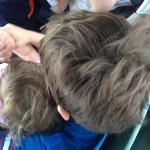
Dream Big. Work Hard. Be Well

